 |

Cost
& Management Accounting
(MGT-402)
VU
Valuing
by-products and joint
products
By-products
Either
of the following methods may be
adopted when valuing
by-products:
(a)
The proceeds from the
sale of the by-product may
be treated as pure
profit
(b)
The proceeds from the
sale, less any handling and
selling expenses, may be applied in
reducing
the
cost of the main
products.
If
a by-product needs further
processing to improve its marketability,
such cost will be deducted
in
arriving
at net revenue, treated as in (a) or
(b) above.
Recorded
profits will be affected by the
method adopted if stocks of
the main product
are
maintained.
Accounting
for joint products
Joint
products are by definition, subject to
individual accounting procedures.
Joint costs may
require
apportionment between products if
only for joint valuation
purposes.
The
main bases for apportionment
are as follows:
Physical
measurement of joint
products
When
the unit of measurement is
different, e.g. liters and
kilos, some method should be
found of
expressing
them in a common unit. Some
joint costs are not
incurred strictly equally for
all Joint
products:
such costs can be separated
and apportioned by introducing
weighting factors.
Market
value
The
effect is to make each
product appear to be equally profitable.
Where certain products are
processed
after the point of
separation, further processing
costs must be deducted from
the market
values
before joint costs are
apportioned.
Technical
estimates of relative use of
common resources
Apportionment
is, of necessity, an arbitrary
calculation and product
costs which include such
an
apportionment
can be misleading if used as a
basis for decision-making.
Problems
of common costs
Even
if careful technical estimates are
made of relative benefits, common costs
apportionment will
inevitably
be an arbitrary calculation. When
providing information to assist
decision-making,
therefore,
the cost accountant will
emphasize cost revenue differences
arising from the
decision.
Here
are some examples of
decisions involving joint
products:
·
withdrawing, or adding, a
product
·
Special pricing
·
Economics of further
processing.
Apportioned
common costs are not
relevant to any of the above
decisions although a change
in
marketing
strategy may affect total
joint costs, e.g.
withdrawing a product may
allow capacity of the
joint
process to be reduced.
In
the short or medium term, it
is probably impractical and/or uneconomic
to alter the processing
structure.
The relative benefit derived by joint
products is, therefore,
irrelevant when considering
profitability
or marketing opportunities.
157
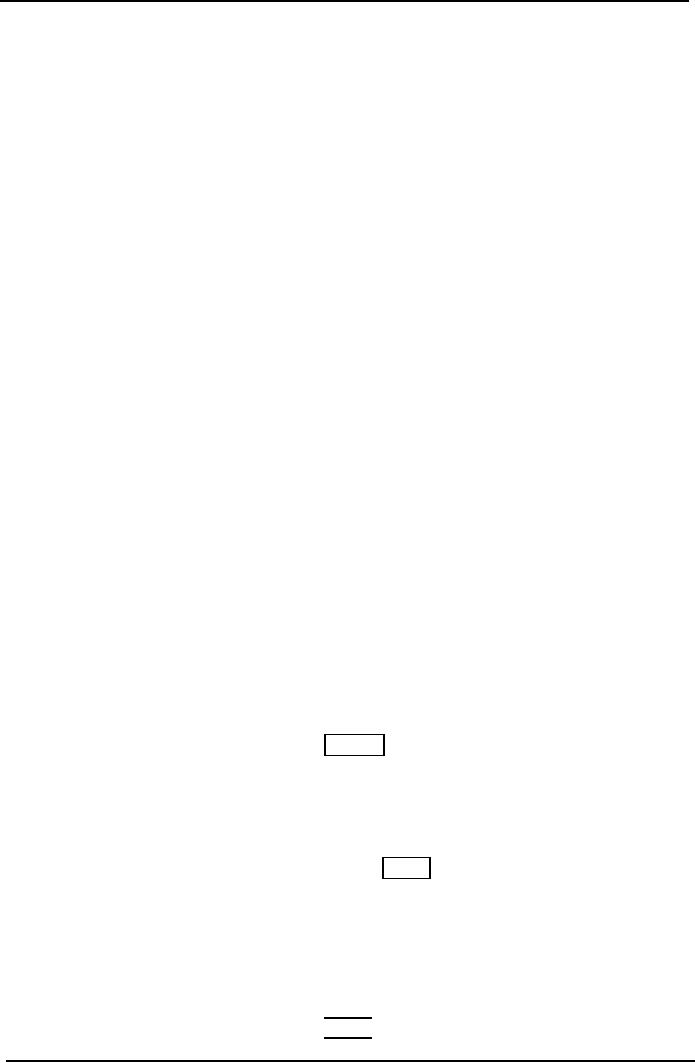
Cost
& Management Accounting
(MGT-402)
VU
PRACTICE
QUESTION
Q.
1
Physical
quantity method
Cost
Allocation at Split off
Point
1960
liter fresh milk put in
the process
Skim
Milk
1,000
Liter
Cream
500
Liter
Butter
200
Liter
Ghee
100
Liter
Yogurt
60
Liter
Miscellaneous
100 Liter
Cost
incurred for 1,960 liters of
milk is Rs. 15,680
Solution
Skim
Milk
=
15,680 / 1960 x 1000 =
8,000
Cream
=
15,680 / 1960 x 500 =
4,000
Butter
=
15,680 / 1960 x 200 =
1,600
Ghee
=
15,680 / 1960 x 100 =
800
Yogurt
=
15,680 / 1960 x 60 =
480
Miscellaneous
=
15,680 / 1960 x 100 =
800
Q.
2
Cost
incurred in the department Rs
70,000
Drum
sticks
Rs.
4 per gram
Breast
pieces
Rs.
6 per gram
Wings
Rs.
3 per gram
Miscellaneous
Rs. 2 per gram
Drum
stick
20,000
X 4
=
80,000
Breast
pieces
10,000
X 6
=
60,000
Wings
6,000
X 3
=
18,000
Miscellaneous
4,000
X 2
=
8,000
1,66,000
Solution
Drum
stick
=
70,000 / 1,66,000 x 80,000 =
33,735
Breast
pieces
=
70,000 / 1,66,000 x 60,000 =
25,300
Wings
=
70,000 / 1,66,000 x 18,000 =
7,590
Miscellaneous
=
70,000 / 1,66,000 x 8,000 =
3,375
70,000
Physical
Quantity Ratio
Total
quantity produced 40,000
grams
Drum
stick
20,000
Breast
pieces
10,000
Wings
6,000
Miscellaneous
4,000
40,000
158
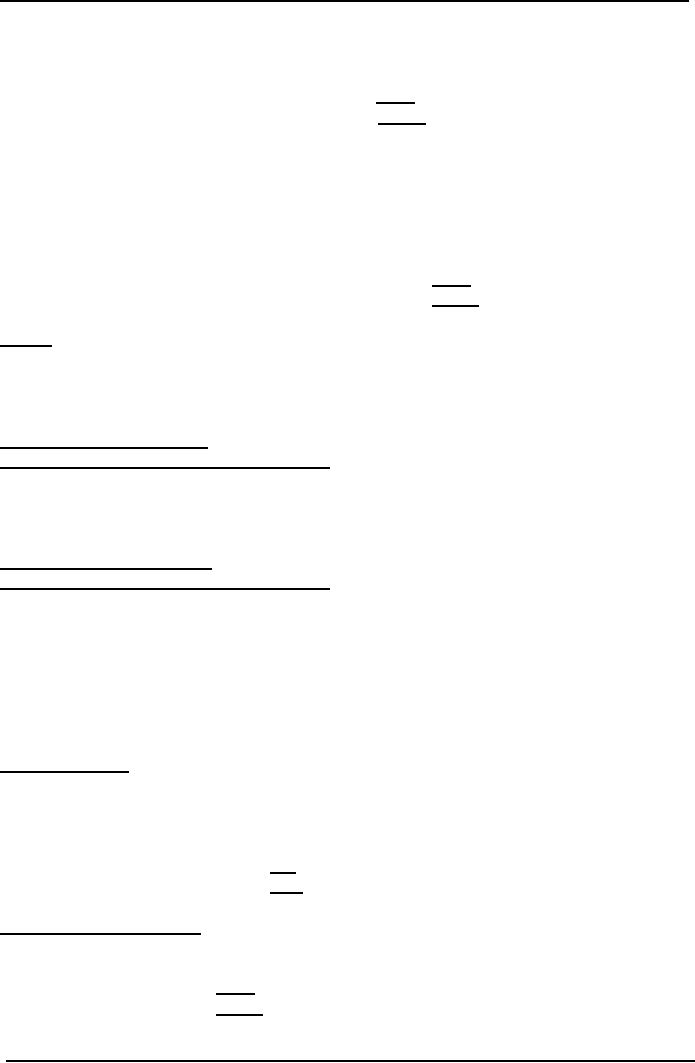
Cost
& Management Accounting
(MGT-402)
VU
Drum
stick
=
70,000 / 40,000 x
20,000
=
35,000
Breast
pieces
=
70,000 / 40,000 x
10,000
=
17,500
Wings
=
70,000 / 40,000 x
6000
=
10,500
Miscellaneous
= 70,000 / 40,000 x
4000
=
7,000
70,000
Q.
3. ABC
limited produces three products O, P
and Q by the operation. Cost accumulated
during
the
operation.
Direct
Material 1000 kg @ Rs 2 =
Rs.
2,000
Direct
Labor
5,000
FOH
8,000
15,000
Output
O
500
Kg
Sold
at split off point for Rs 20
/ kg
P
300
kg
Enters
into a second process
Q
200
kg
Enters
into a second process
Second
process for product P
Cost
incurred: Total
Per
Unit
Direct
Labor cost
Rs.
6,000
Rs.
20
FOH
Rs.
3,000
Rs.
10
Product
P is 100% complete & sold for Rs 70 /
kg
Second
process for product Q
Cost
incurred: Total
Per
Unit
Direct
Labor cost
Rs.
1,400
Rs.
7
FOH
Rs.
600
Rs.
3
Product
Q is 100% complete & sold for Rs 30 /
kg
Solution
Method
# 1
Physical
Quantity Ratio
Process-1
Quantity
Schedule
Units
put in the process 1,000
kg
Completed
units of product "O"
500
kg
Transfer
to further process
Product
"P"
300
Product
"Q"
200
1000
Cost
Accumulated as follow:
Direct
Material
2,000
Direct
Labor
5,000
FOH
8,000
15,000
159
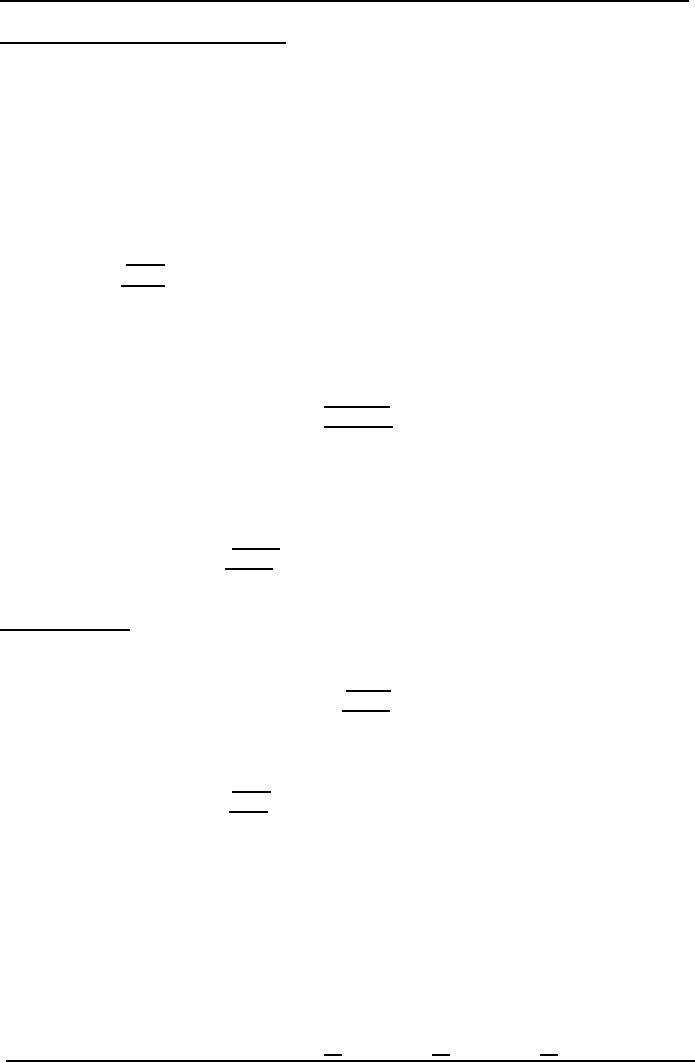
Cost
& Management Accounting
(MGT-402)
VU
Cost
Allocation / Accounting
Treatment
Product
O
=
15,000
x500 / 1000 = 7,500
Product
P
=
15,000
x 300 / 1000 = 4,500
Product
Q
=
15,000
x 200 / 1000 = 7,500
Product
O
No
further process is required
Completed
& Sold
Sold
500 x 20 = 10,000
Cost
500 x 15 = 7,500
Gross
Profit
2,500
Product
P
Cost
Accumulated
Cost
received from Process
1
Rs.
4,500
Direct
Labor
6,000
FOH
3,000
13,500
Unit
Cost = 13,500 / 300 = 45 /
Kg
Transfer
to finished goods = 300 x 45 =
13,500
Sales
300 x 70
=
21,000
Less
Cost 300 x 45
=
13,500
7,500
Product
Q
Cost
Accumulated
Cost
received from Process
1
Rs.
3,000
Direct
Labor
1,400
FOH
600
5,000
Unit
Cost
5,000
/ 200 = 25 / Kg
Transfer
to finished goods = 200 x 25 =
5,000
Sales
200 x 30
=
6,000
Less
Cost 200 x 25
=
5,000
1,000
Method
# 2 Hypothetical market Value
Basis
O
P
Q
Rs
Rs
Rs
Final
Price
20
70
30
Additional
Cost per kg
In
further processing
Direct
Labor
-
20
7
Factory
Overhead
-
10
3
Hypothetical
Market Value
At
split off point
20
40
20
160
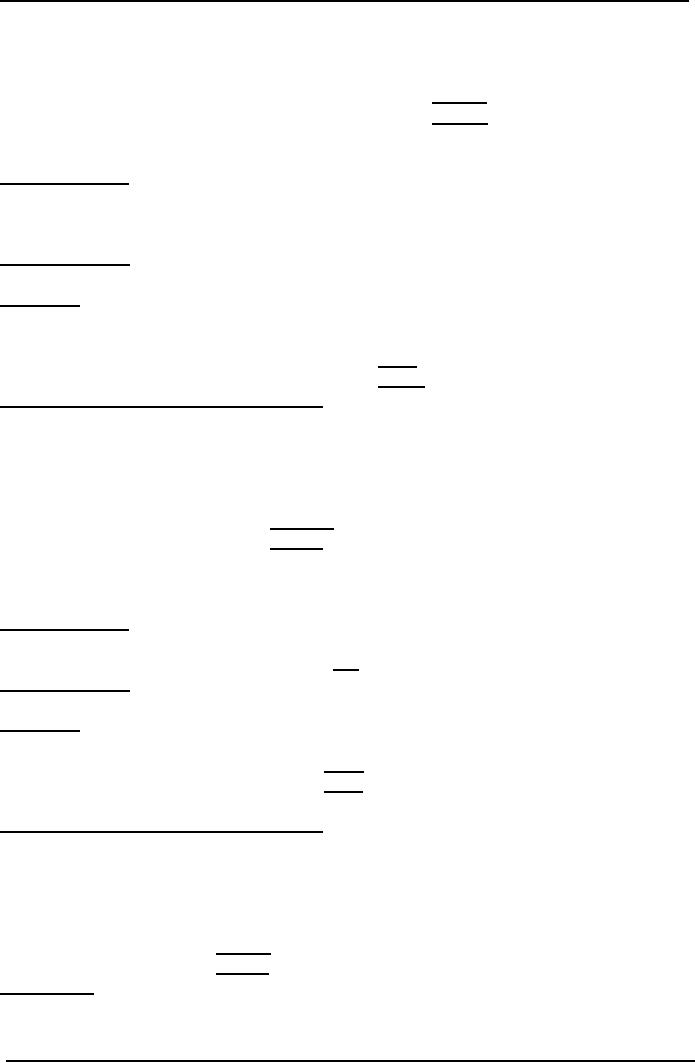
Cost
& Management Accounting
(MGT-402)
VU
Cost
Allocation in the
Process-1
Product
O (Finished) 15,000 / 80 x 20
=
3,750
Product
P Transferred to process II 15,000 / 80 x
40
=
7,500
Product
Q Transferred to process II 15,000 / 80 x
20
=
3,750
15,000
Product
P
Process
-II
Quantity
Schedule
Received
From process-I
300
Completed
and transfer out
300
Cost
Accumulated
Cost
received from
process-1
7,500
Cost
added
Direct
Labor
6,000
FOH
3,000
9,000
16,500
Cost
Apportionment / Accounting
Treatment
Cost
transfer to finished
good
Rs
16,500
16,500
/ 300 = 55 per kg
300
x 55 = 16500
Sales
300
x 70
=
21,000
Less
Cost
300
x 55
=
16,500
Gross
Profit
4,500
Product
Q
Process
-II
Quantity
Schedule
Received
From process-I
200
Completed
and transferred out
200
Cost
Accumulated
Cost
received from
process-1
3,750
Cost
added
Direct
Labor
1,400
FOH
600
5,750
Cost
Apportionment / Accounting
Treatment
Cost
transfer to finished
good
Rs
5,750
5750
/ 200 = 28.75 per kg
200
x 28.75 = 5,750
Sales
200 x 30
=
6,000
Less
Cost 300 x 55
=
5,750
250
By
Products
Some
examples of by products are given
below:
161
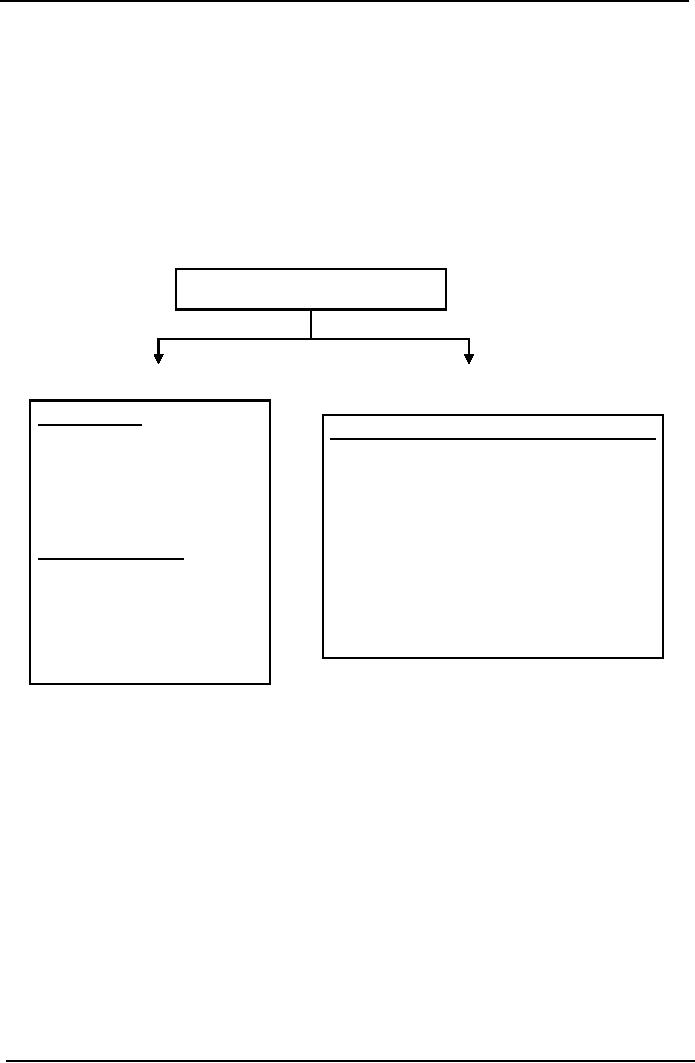
Cost
& Management Accounting
(MGT-402)
VU
Main
Product
By
Product
Soap
Glycerin
Meat
Hides
& Fats
Flour
Bran
Classification
of by product
By
product can be classified
into two categories:
1.
Requiting no further process,
for example Bran
2.
Requiting further processing,
for example Hides
Accounting
for By Products
Income
Approach
Costing
Approach
Sales
Income
Credit
the cost of main product with
the:
1-
Treat as other income
1-
Replacement cost / Opportunity
2-
Treat as a deduction form
Cost
of By Product
Cost
goods sold
3-
Treat as a deduction form
2-
Predetermined price /
Standard
Cost
goods manufactured
Cost
Realizable
Income
1-
Treat as a deduction form
Cost
goods manufactured
162
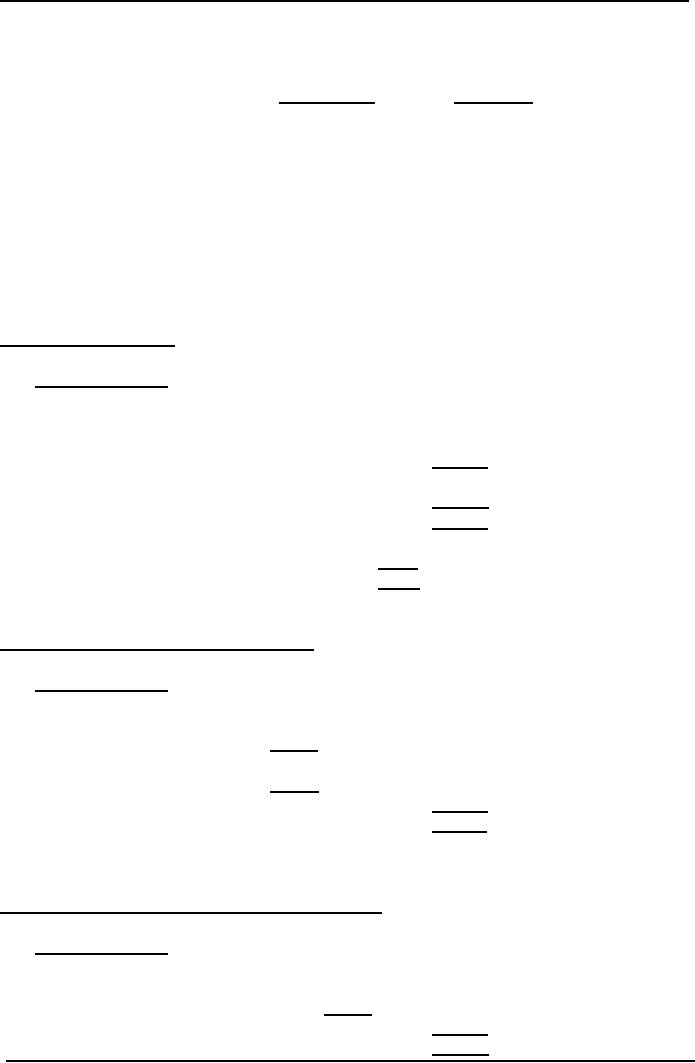
Cost
& Management Accounting
(MGT-402)
VU
PRACTICE
QUESTION
Following
is a question on by product:
Main
product
By
product
Opening
stock
-----
-----
Production
during the year
4,000
800
Closing
stock
400
100
Cost
incurred
64,000
-----
Cost
of 3600 units (64,000/4000x3600)
57,600
-----
Sales
price (Per unit)
30
2.50
Further
processing cost
0.50
Solution
Method
# 1
Rupees
Treat
as an other income
Sales
(3600 x 30)
108,000
Less
Cost of goods sold
Opening
stock
----
Production
cost
64,000
Less
Closing stock (16 x 400)
(6,400)
57,600
Gross
Profit
50,400
Add
other income
1,400
51,800
Sales
of By Product
(700
x 2.5)
1,750
Less
Further Processing cost (700
x 0.5)
350
1,400
Method
# 2
Rupees
Treat
as a deduction from cost of
goods sold
Sales
(3600 x 30)
108,000
Less
Cost of goods sold
Opening
stock
----
Production
cost
64,000
Less
Closing stock (16 x 400)
6,400
57,600
Less
Sales value of By Product
(1,400)
56,200
Gross
Profit
51,800
Method
# 3
Rupees
Treat
as a deduction from cost of
goods manufactured
Sales
(3600 x 30)
108,000
Less
Cost of goods sold
Opening
stock
----
Production
cost (64,000
1,400)
62,600
Less
Closing stock (62,600 x 10%)
6,260
56,340
Gross
Profit
56,660
163
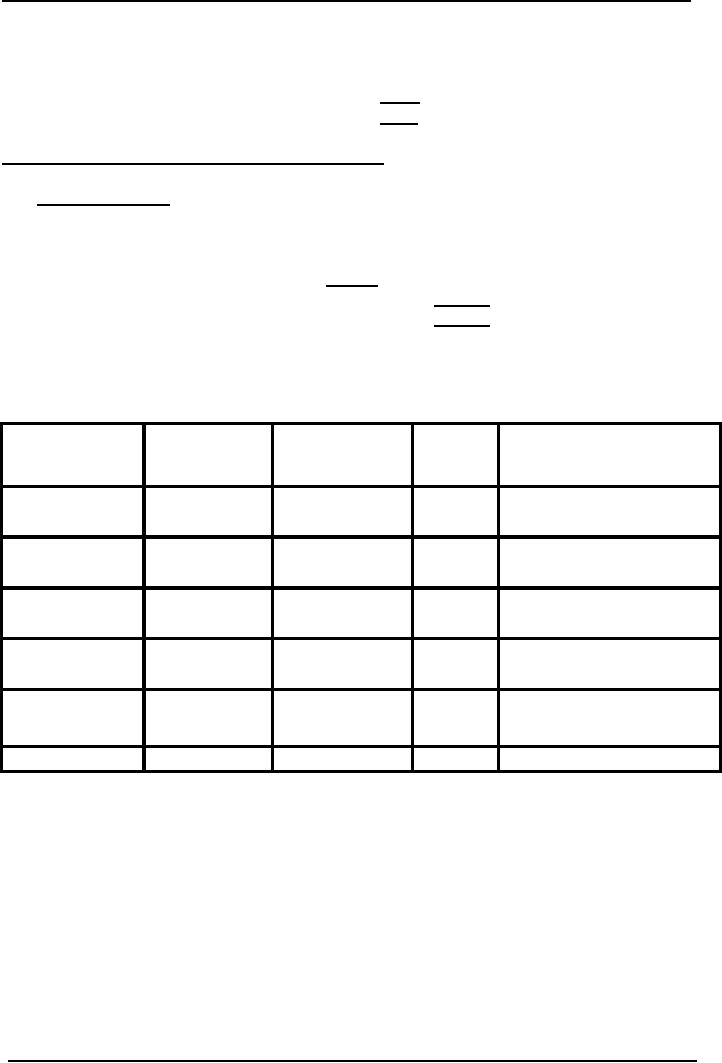
Cost
& Management Accounting
(MGT-402)
VU
Realizable
Value Basis
Production
cost on By Product
800
x 2.50 =
2,000
Additional
cost on By Product
800
x 0.50 =
400
Realizable
Value
1,600
Treat
as a deduction from cost of
goods manufactured
Sales
(3600 x 30)
108,000
Less
Cost of goods sold
Opening
stock
----
Production
cost (64,000
1,600)
62,400
Less
Closing stock
(62,400/4,000=15.6
x 400)
6,240
56,160
Gross
Profit
51,840
Further
example of by product
Joint
Cost Rs. 206,800
Further
Cost
Sales
Price Market Value
Incurred
per
pound
Grade
1
20,000
lb
1
5
(5-1)
= 4 x 20,000
80,000
Grade
2
40,000
0.2
4
(4-0.2)
= 3.8 x 40,000
152,000
Grade
3
60,000
0.5
3
(3-0.5)
= 2.5 x 60,000
150,000
Grade
4
80,000
0.2
2
(2-0.2)
= 1.8 x 80,000
144,000
Grade
5
50,000
0.1
1
(1-0.1)
= 0.9 x 50,000
45,000
Total
250,000
Multiple
Choice Questions
A
chemical compound is made by
raw material being processed
through two processes.
The
output
of Process A is passed to Process B where
further material is added to the
mix. The details
of
the process costs for
the financial period number 10
were as shown below:
Process
A
Direct
material
2,000
kilograms at Rs5 per kg
Direct
labor
Rs
7,200
Process
plant time 140 hours at
Rs60 per hour
Process
B
Direct
material
1,400
kilograms at Rs12 per kg
Direct
labor
Rs
4,200
Process
plant time 80 hours at
Rs72.50 per hour
The
departmental overhead for Period 10
was Rs 6,840 and is absorbed
into the costs of
each
164

Cost
& Management Accounting
(MGT-402)
VU
process
on direct labor cost.
Process
A
Process
B
Expected
output was
80%
of input
90%
of input
Actual
output was
1,400
kgs
2,620
kgs
Assume
no finished stock at the beginning of the
period and no work-in-progress at either
the
beginning
or the end of the
period.
Normal
loss is contaminated material which is sold as
scrap for Rs0.50 per kg
from Process A and
Rs1.825
per kg from Process B, for
both of which immediate
payment is received.
Q.
1
For
process A what is the scrap
value of the normal
loss?
A
Rs
200
B
Rs
2,000
C
Rs
1,000
D
Rs
0
Q.
2
What
is the abnormal loss for
process A in units?
A
100
B
200
C
300
D
400
Q.
3
What
is the cost per kg for
process A?
A
Rs 18,575
B
Rs 13,454
C
Rs 14.575
D
Rs 16,575
Problem
Question
Q.
1
Kong
CO. manufactures two products, one in
process A, the other in
process B. The
following
information
applies to the processes for
Period.
All
materials are input at the
start of each process, conversion
costs (labor and overhead)
are
incurred
evenly throughout the
process, and losses are
identified at the end of
process A and can
be
sold for 10p per liter.
The dosing work-in-progress is % of
the way through the
process.
Write
up the accounts for process A
and for process B
Process
A
Process
B
Material
input-1
4.000
liters costing
200
kg costing
Rs
3,000
Rs
2,000
Labor
and overhead
Rs
3,440
Rs
3,900
Transfers
to finished goods
13,000
liters
180
kg
Opening
work-in-progress
Nil
Nil
Closing
work-in-progress
Nil
20
kg
Normal
loss as % of input
10%
Nil
Q.
2
Mineral
Separators Ltd operates a
process which produces four
unrefined minerals known as W,
X.
Y and Z. The joint costs
for operating the process
for Period V were as
below.
Process
overhead is absorbed by adding
25% of the labor cost.
The output for Period V
was as
165

Cost
& Management Accounting
(MGT-402)
VU
shown
below.
There
were no stocks of unrefined
materials at the beginning of Period V,
and no work-in-
progress,
but the stocks shown
below were on hand at the
end of the period, although
there was
no
work-in-progress at that
date.
The
price received per ton of
unrefined mineral sold is shown
below and it is confidently
expected
that
these prices will be
maintained.
You
are required:
(a)
To calculate the cost value of
the closing stock, using sales value as
the basis of your
calculation.
(b)
To calculate the cost value of
dosing stock, using weight of output as
the basis of your
calculation.
166
Table of Contents:
- COST CLASSIFICATION AND COST BEHAVIOR INTRODUCTION:COST CLASSIFICATION,
- IMPORTANT TERMINOLOGIES:Cost Center, Profit Centre, Differential Cost or Incremental cost
- FINANCIAL STATEMENTS:Inventory, Direct Material Consumed, Total Factory Cost
- FINANCIAL STATEMENTS:Adjustment in the Entire Production, Adjustment in the Income Statement
- PROBLEMS IN PREPARATION OF FINANCIAL STATEMENTS:Gross Profit Margin Rate, Net Profit Ratio
- MORE ABOUT PREPARATION OF FINANCIAL STATEMENTS:Conversion Cost
- MATERIAL:Inventory, Perpetual Inventory System, Weighted Average Method (W.Avg)
- CONTROL OVER MATERIAL:Order Level, Maximum Stock Level, Danger Level
- ECONOMIC ORDERING QUANTITY:EOQ Graph, PROBLEMS
- ACCOUNTING FOR LOSSES:Spoiled output, Accounting treatment, Inventory Turnover Ratio
- LABOR:Direct Labor Cost, Mechanical Methods, MAKING PAYMENTS TO EMPLOYEES
- PAYROLL AND INCENTIVES:Systems of Wages, Premium Plans
- PIECE RATE BASE PREMIUM PLANS:Suitability of Piece Rate System, GROUP BONUS SYSTEMS
- LABOR TURNOVER AND LABOR EFFICIENCY RATIOS & FACTORY OVERHEAD COST
- ALLOCATION AND APPORTIONMENT OF FOH COST
- FACTORY OVERHEAD COST:Marketing, Research and development
- FACTORY OVERHEAD COST:Spending Variance, Capacity/Volume Variance
- JOB ORDER COSTING SYSTEM:Direct Materials, Direct Labor, Factory Overhead
- PROCESS COSTING SYSTEM:Data Collection, Cost of Completed Output
- PROCESS COSTING SYSTEM:Cost of Production Report, Quantity Schedule
- PROCESS COSTING SYSTEM:Normal Loss at the End of Process
- PROCESS COSTING SYSTEM:PRACTICE QUESTION
- PROCESS COSTING SYSTEM:Partially-processed units, Equivalent units
- PROCESS COSTING SYSTEM:Weighted average method, Cost of Production Report
- COSTING/VALUATION OF JOINT AND BY PRODUCTS:Accounting for joint products
- COSTING/VALUATION OF JOINT AND BY PRODUCTS:Problems of common costs
- MARGINAL AND ABSORPTION COSTING:Contribution Margin, Marginal cost per unit
- MARGINAL AND ABSORPTION COSTING:Contribution and profit
- COST – VOLUME – PROFIT ANALYSIS:Contribution Margin Approach & CVP Analysis
- COST – VOLUME – PROFIT ANALYSIS:Target Contribution Margin
- BREAK EVEN ANALYSIS – MARGIN OF SAFETY:Margin of Safety (MOS), Using Budget profit
- BREAKEVEN ANALYSIS – CHARTS AND GRAPHS:Usefulness of charts
- WHAT IS A BUDGET?:Budgetary control, Making a Forecast, Preparing budgets
- Production & Sales Budget:Rolling budget, Sales budget
- Production & Sales Budget:Illustration 1, Production budget
- FLEXIBLE BUDGET:Capacity and volume, Theoretical Capacity
- FLEXIBLE BUDGET:ANALYSIS OF COST BEHAVIOR, Fixed Expenses
- TYPES OF BUDGET:Format of Cash Budget,
- Complex Cash Budget & Flexible Budget:Comparing actual with original budget
- FLEXIBLE & ZERO BASE BUDGETING:Efficiency Ratio, Performance budgeting
- DECISION MAKING IN MANAGEMENT ACCOUNTING:Spare capacity costs, Sunk cost
- DECISION MAKING:Size of fund, Income statement
- DECISION MAKING:Avoidable Costs, Non-Relevant Variable Costs, Absorbed Overhead
- DECISION MAKING CHOICE OF PRODUCT (PRODUCT MIX) DECISIONS
- DECISION MAKING CHOICE OF PRODUCT (PRODUCT MIX) DECISIONS:MAKE OR BUY DECISIONS